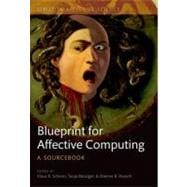
Note: Supplemental materials are not guaranteed with Rental or Used book purchases.
Purchase Benefits
What is included with this book?
| Contributors | p. xi |
| Theoretical approaches to the study of emotion in humans and machines | |
| Emotion and emotional competence: conceptual and theoretical issues for modelling agents | p. 3 |
| Computational models of emotion | p. 21 |
| The emotion process: Perspectives from psychology and the neurosciences | |
| The component process model: Architecture for a comprehensive computational model of emergent emotion | p. 47 |
| The emotional brain meets affective computing | p. 71 |
| The face and voice of emotions: The expression of emotions | p. 85 |
| Psychophysiological response patterning in emotion: Implications for affective computing | p. 105 |
| Emotions in interpersonal interactions | p. 131 |
| Emotional expression: Ground truth and agent evaluation | |
| The essential role of human databases for learning in and validation of affectively competent agents | p. 151 |
| On the use of actor portrayals in research on emotional expression | p. 166 |
| Approaches to the computational modelling of emotion | |
| WASABI as a case study of how misattribution of emotion can be modelled computationally | p. 179 |
| Emotion in artificial neural networks | p. 194 |
| Approaches to an implementation of affectively competent agents | |
| Expression of affects in embodied conversational agents | p. 213 |
| Synthesis of emotional speech | p. 222 |
| Automatic detection of emotion from vocal expression | p. 232 |
| Body gesture and facial expression analysis for automatic affect recognition | p. 245 |
| Communicating emotional states with the Greta agent | p. 256 |
| Approaches to developing expression corpora and databases | |
| Introducing the Geneva multimodal emotion portrayal (GEMEP) corpus | p. 271 |
| Induction techniques developed to illuminate relationships between signs of emotion and their context, physical and social | p. 295 |
| Conclusions | |
| Outlook: Integration and future perspectives for affective computing | p. 311 |
| Bibliography | p. 321 |
| Appendix: A non-exhaustive list of online resources | p. 369 |
| Author Index | p. 373 |
| Index | p. 381 |
| Table of Contents provided by Ingram. All Rights Reserved. |
The New copy of this book will include any supplemental materials advertised. Please check the title of the book to determine if it should include any access cards, study guides, lab manuals, CDs, etc.
The Used, Rental and eBook copies of this book are not guaranteed to include any supplemental materials. Typically, only the book itself is included. This is true even if the title states it includes any access cards, study guides, lab manuals, CDs, etc.